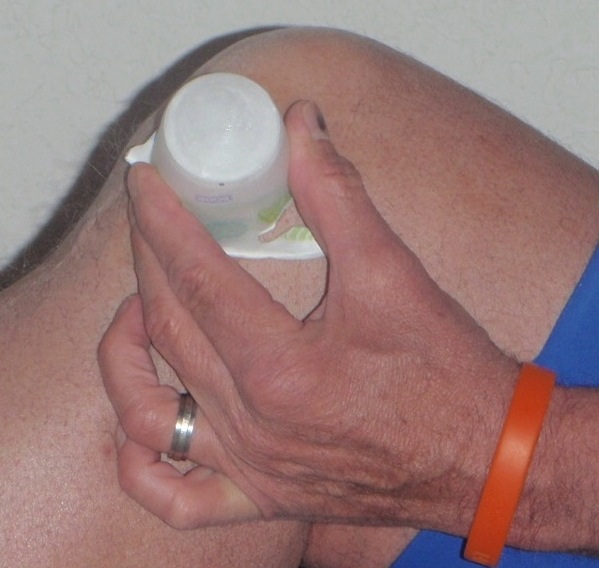Optimal Recovery for Improved Cycling Performance
Effective Cycling Training —> Results in Overload —> Which with Recovery —> Yields Improvement.
“Without adequate recovery, your body remains in a perpetual broken down state without realizing the full benefit of your cycling workouts.”
by Coach John Hughes
John Hughes is the author of Anti-Aging: 12 Ways to You Can Slow the Aging Process and of the book Distance Cycling. He has written 40 articles on training, nutrition, psychology and medical issues for RoadBikeRider.com. More about Coach Hughes.
© John Hughes, All Rights Reserved
Want to get more benefit from your workouts? Want to increase the volume or intensity of your training? Want to improve your performance in events? Want to hurt less and enjoy riding more? Then focus on the most frequently overlooked element of successful training—your recovery.
Recovery is every bit as important as the workout itself. It’s simple: Without recovery, workouts are less effective because you’re not allowing your body to process the wear and tear you are putting it through (the overload). Thus, it’s not allowed to rebuild and become stronger. Instead, without adequate recovery, your body remains in a perpetual broken down state without realizing the full benefit of your workouts.
By improving your recovery you can do harder workouts or more frequent workouts, i.e. get more quality out of your rides. The higher quality workouts will lead to greater improvement. Rather than thinking that taking time for recovery takes away time from training, you need to recognize that recovery improves your training! By paying attention to your recovery, you also reduce the risk of overtraining and you can come into an event fresh and ready to do your best.
- Effective Training —> Results in Overload —> Which with Recovery —> Yields Improvement
You can improve the quality of your recovery in the following ways:
- Removing Lactic Acid. Lactic acid is removed within 30 to 60 minutes after a hard workout, i.e., during the cool-down! The following apply to improving recovery longer after the ride including the next day when your body continues to remove waste products and repairs muscle damage.
 John Hughes massaging his quadriceps |
- Replenishing Nutrients. Muscle soreness during or immediately after a ride is usually the result of a metabolic and energy imbalance. You should address this by good recovery nutrition—high quality carbohydrate, non-alcoholic fluids and sodium—immediately after a ride and for the next 24 hours.
- Relieving Muscle Tightness. Muscle fibers are composed of thick filaments (myosin) and thin filaments (actin). When a muscle fiber contracts these filaments slide past each other, which is inhibited if the muscle is tight. Tight muscles also decrease comfort on the bike, making you less likely to train effectively, and increase the risk of cramping. You should stretch for a few minutes most days. A hot bath will also help relax muscles.
- Venous Return of Blood. If blood pools in the capillaries in your legs, this will reduce the speed with which nutrients are replaced and cause swelling with the same consequences as tight muscles. You can address this simply by elevating your legs above your heart for 10-15 minutes after most rides or wearing a compression garment, although the scientific efficacy of the latter has yet to be demonstrated. Massage, either professional massage, self-massage with your hands or with a hard foam roller, also improves the venous return. Try to fit in a massage every week when building your training volume and during the main season.
- Return of Lymphatic Fluids. The lymph system is the body’s sewer system, removing waste products from the cells. The blood circulates because of the pumping action of the heart and is aided by the suggestions above; however, the lymph system has no pump. Movement of lymphatic fluid to the lymph nodes depends on muscular motion, which is why a cool-down after a hard ride and active recovery rides or walks are so important. Massage also helps move lymphatic fluid, another reason for the weekly massage.
 Focal point icing |
- Reduce Localized Pain and Acute Inflammation. You may feel pain around a joint or along a ligament, and the body senses either an injury or the potential for an injury. The body increases blood flow to the area to protect the affected area. You can reduce the pain and hasten your return to active duty by icing. If you are prone to inflammation in a particular body part, treat it prophylacticly by icing before you go out and again a couple of times after the ride. Don’t ice for more than 20 minutes at a time or your body will sense that the body part might freeze and will rush more blood to it to protect it!
- Relieve Delayed Onset Muscle Soreness (DOMS). The above all relieve pain the day of a hard ride. DOMS is muscle pain occurring a day or more later. Scientists aren’t sure what causes DOMS. The current theory is that damaged muscle fibers have micro-tears and the fibers release chemical irritants, which stimulate the pain receptors in the muscle. The fibers are also swollen from the workouts and they press on the pain receptors. The result is that the muscle doesn’t move freely the next day and it hurts. Icing and massage can relieve this and there’s some evidence that compression garments may also help.
More Information
Optimal Recovery for Improved Performance explains 10 different recovery techniques including post-ride nutrition, stretching, self-massage and icing. 16 pages illustrated with 10 photos for $4.99 from RoadBikeRider.com
Other articles by Coach Hughes from RoadBikeRider.com.











